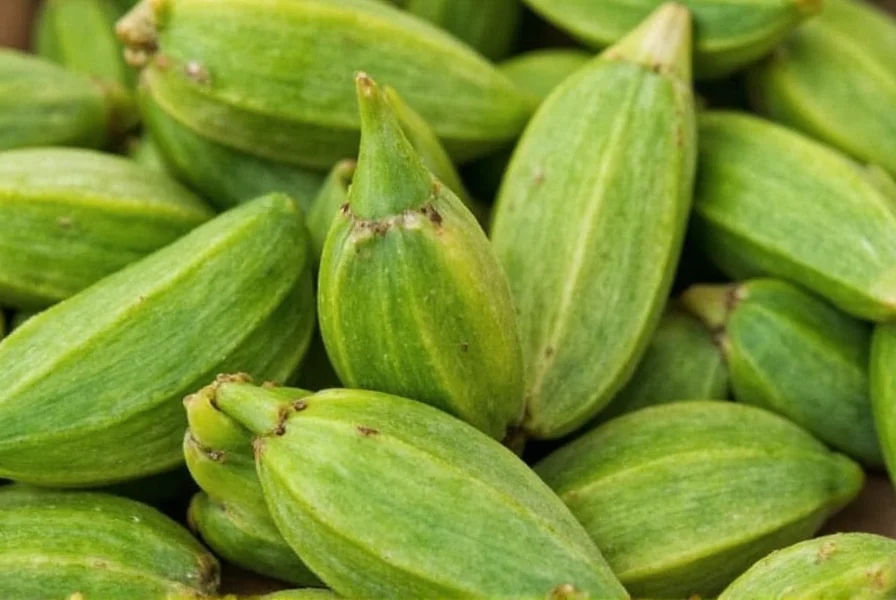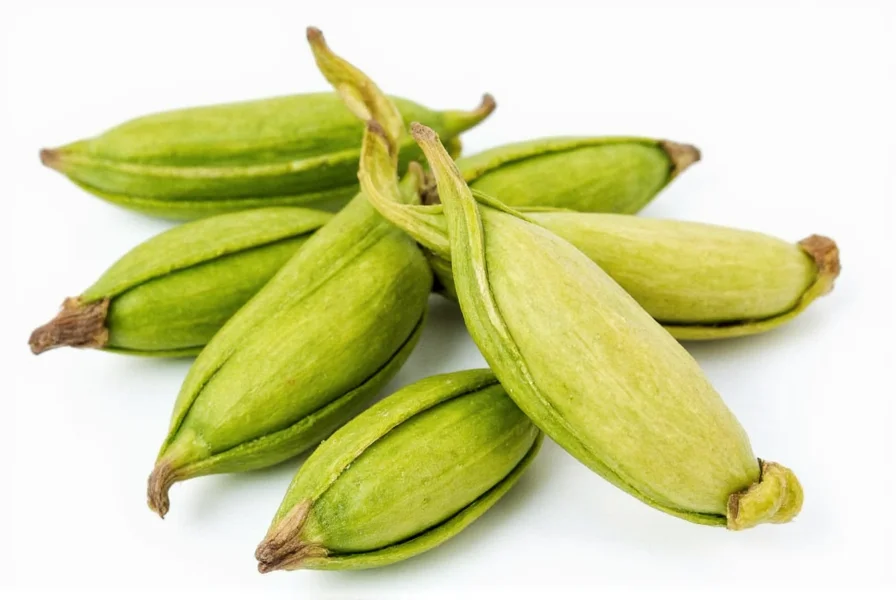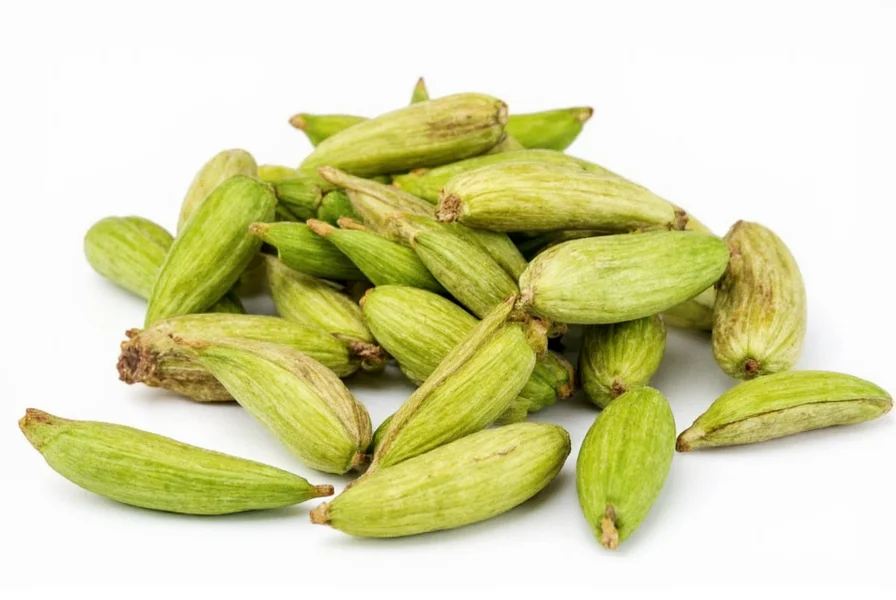Cardamom isn't just another spice sitting quietly in your pantry—it's a flavor powerhouse with a rich history spanning thousands of years. As the third most expensive spice globally after saffron and vanilla, this aromatic seed pod has earned its place in kitchens and apothecaries worldwide. Understanding what cardamom is used for reveals why this "Queen of Spices" continues to be indispensable across cultures.
Culinary Applications of Cardamom
Cardamom's complex flavor profile—citrusy, floral, with hints of mint and pepper—makes it incredibly versatile in cooking. Professional chefs and home cooks alike prize it for its ability to elevate both sweet and savory preparations without overwhelming other ingredients.
Baking and Desserts
Green cardamom shines in sweet applications where its delicate aroma can fully express itself. Scandinavian baking traditions feature cardamom prominently in "kardemummabullar" (cardamom buns), while Indian cuisine uses it in "kheer" (rice pudding) and countless sweet treats. When grinding your own cardamom pods for baking, use approximately three times the amount called for in recipes using pre-ground spice, as freshly ground cardamom delivers significantly more intense flavor.

Savory Dishes and Spice Blends
In savory cooking, cardamom serves as a foundational spice in numerous regional cuisines. It's essential in Indian "garam masala", Middle Eastern "baharat", and Ethiopian "berbere" spice mixes. When preparing biryanis or pulaos, adding whole cardamom pods during the rice cooking process infuses the entire dish with subtle aromatic notes. Black cardamom, with its distinctive smoky character, works particularly well in slow-cooked meat dishes and robust stews.
Beverages
Cardamom transforms ordinary drinks into extraordinary experiences. In Middle Eastern coffee preparation, freshly ground cardamom is added directly to the grounds before brewing, creating the distinctive "qahwa" enjoyed throughout the region. For tea lovers, crushing a few cardamom seeds into your cup enhances both black and herbal teas. Modern baristas have embraced cardamom in specialty coffee drinks, while craft cocktail makers use it to add complexity to spirits like gin and whiskey.
Traditional and Potential Health Applications
Long before modern science began examining cardamom's properties, traditional medicine systems incorporated it for various wellness purposes. While contemporary research continues to explore these applications, it's important to distinguish between traditional uses and scientifically verified benefits.
Digestive Support
One of cardamom's most consistent traditional uses across Ayurvedic, Chinese, and Unani medicine systems involves digestive health. Many cultures consume cardamom after meals to alleviate bloating and support digestion. The spice contains compounds like cineole that may help relax gastrointestinal muscles. Try chewing a few cardamom seeds after heavy meals for natural digestive support—a practice common in India and the Middle East.
Respiratory Health
Cardamom's expectorant properties have made it valuable in traditional respiratory remedies. Inhaling steam with a few crushed cardamom pods can help clear nasal passages, while cardamom tea with honey serves as a traditional soothing remedy for coughs. The spice's anti-inflammatory compounds may contribute to these respiratory benefits, though more research is needed to confirm specific mechanisms.
| Cardamom Type | Primary Culinary Uses | Traditional Medicinal Applications |
|---|---|---|
| Green Cardamom | Baking, desserts, coffee, light sauces | Digestive aid, breath freshener, mood enhancer |
| Black Cardamom | Meat dishes, stews, robust curries | Respiratory support, pain relief |
| Ground Cardamom | Quick recipes, baking, spice blends | Convenient for daily use in teas and remedies |
Other Practical Applications
Beyond the kitchen and medicine cabinet, cardamom serves several additional purposes that showcase its versatility.
Natural Breath Freshener
Chewing cardamom seeds has been a traditional method for freshening breath across multiple cultures. The antimicrobial properties help reduce odor-causing bacteria, while the aromatic compounds leave a pleasant scent. Unlike commercial breath mints that often contain artificial flavors, cardamom provides natural freshness with potential oral health benefits.
Aromatherapy and Fragrance
The essential oil extracted from cardamom seeds features prominently in aromatherapy for its uplifting, slightly spicy scent. Many natural perfumers incorporate cardamom as a middle note that bridges citrus top notes with woody base notes. At home, simmering cardamom pods with citrus peels creates a natural air freshener that fills your space with warm, inviting aromas—perfect for holiday gatherings.
How to Use Cardamom Effectively
To maximize cardamom's potential in your cooking and wellness routines, understanding proper usage techniques is essential.
Forms and Storage
Cardamom comes in three primary forms, each with specific advantages:
- Whole pods—retain freshness longest (up to a year when stored properly)
- Seeds only—more concentrated flavor than whole pods
- Ground cardamom—convenient but loses potency quickly
For optimal freshness, store whole cardamom pods in an airtight container away from light and heat. When recipes call for "crushed" cardamom, lightly crack the pods with the back of a knife rather than fully grinding them to release just enough flavor without bitterness.
Flavor Pairing Guide
Cardamom harmonizes beautifully with certain ingredients while potentially clashing with others. Successful pairings include:
- Citrus fruits (orange, lemon)
- Other warm spices (cinnamon, cloves, nutmeg)
- Dairy products (milk, yogurt, cream)
- Sweeteners (honey, maple syrup, brown sugar)
Avoid pairing cardamom with strongly anise-flavored ingredients like fennel or star anise, as their similar chemical compounds can create an unbalanced flavor profile.

Understanding Cardamom Varieties and Their Specific Uses
Not all cardamom serves the same purpose. Recognizing the differences between varieties helps you select the right type for your needs:
- Green cardamom (Elettaria cardamomum)—The most common variety, prized for its delicate, floral notes. Ideal for desserts, beverages, and light sauces.
- Black cardamom (Amomum subulatum)—Larger, smokier pods traditionally dried over open flames. Best for hearty meat dishes and robust curries.
- Madagascar cardamom—A newer variety with citrus-forward notes, excellent in fruit-based desserts.
When substituting one variety for another, remember that black cardamom's intense smokiness requires using approximately half the amount called for with green cardamom to avoid overwhelming your dish.
Frequently Asked Questions
What is the primary culinary use of cardamom?
Cardamom's primary culinary use is enhancing both sweet and savory dishes across global cuisines. Green cardamom is most commonly used in baking, desserts, and beverages like coffee and tea, while black cardamom serves in hearty meat dishes and robust curries due to its smoky flavor profile.
Can cardamom help with digestion naturally?
Yes, cardamom has been traditionally used for digestive support across multiple cultures. Chewing cardamom seeds after meals is a common practice in India and the Middle East to alleviate bloating and support digestion. The spice contains compounds like cineole that may help relax gastrointestinal muscles, though scientific research on specific mechanisms is ongoing.
What's the difference between green and black cardamom uses?
Green cardamom has a delicate, floral flavor ideal for desserts, baking, and beverages, while black cardamom offers a distinctive smoky profile best suited for hearty meat dishes and robust curries. Green cardamom is used in Indian garam masala and Scandinavian baking, whereas black cardamom features in certain Indian and Chinese slow-cooked dishes. They are not direct substitutes due to their different flavor profiles.
How should I store cardamom to maintain freshness?
Store whole cardamom pods in an airtight container away from light and heat for maximum freshness, which can last up to a year. Ground cardamom loses potency quickly, so it's best to grind whole pods as needed. Avoid storing cardamom near strong-smelling foods as it can absorb odors. For long-term storage, keep it in the freezer in a sealed container.
What are traditional non-culinary uses of cardamom?
Traditional non-culinary uses of cardamom include natural breath freshening (by chewing the seeds), respiratory support (through steam inhalation with crushed pods), and aromatherapy (using cardamom essential oil). It has also been used in traditional medicine systems like Ayurveda for centuries to support digestive health and as a natural mood enhancer.











 浙公网安备
33010002000092号
浙公网安备
33010002000092号 浙B2-20120091-4
浙B2-20120091-4